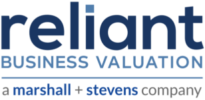13 Oct What Types of Risk Affect the Value of a Business?
Company Specific Risk (CSR) is a specific risk rate that is applied to any one company and can greatly affect its value. CSR is a subjective adjustment made by the valuation analyst based on the knowledge and understanding gathered about the company during the valuation process. It is important to note that company specific risk factors have an inverse relation to the earnings multiple; as the CSR increases, the earnings multiple will decrease.
Here are some of the different types of Company Specific Risk factors that should be taken into consideration:
-
- The Financial Strength of a Company
The financial strength of a company is a CSR that needs to be taken into consideration when applying risk factors. If the company is deemed to be financially healthy or strong, the risk applied can be decreased. If the company is deemed to have weak financials, more CSR should be applied. The financial health of a company can be determined by looking at different metrics like Seller’s Discretionary Earnings (SDE) or by comparing the company’s ratios to the industry’s average. - Level of Diversification and Customer or Supplier Concentration
A risk factor is applied to a business after evaluating its level of diversification of revenue streams, and whether or not the company has customer or supplier concentration. If the company being valued is shown to have just a few customers or clients that represent 20% or more of its revenues, then the risk rate being applied should be increased. If the company’s revenue is spread over many customers, then the risk rate being applied can be decreased. The same methodology is applied if the company being valued has any supplier concentration. If the company being valued has a singular supplier that is responsible for supplying a significant portion of the company’s product, then the risk rate being applied will need to be increased. Overall, if the level of diversification is higher, then the company specific risk will be decreased. If the level of diversification is lower, then the CSR will be increased. - Depth and Quality of Management / Personal Goodwill
The risk of depth and quality of management and personal goodwill considers the risk if the owner (or in some cases, a general manager or key employee) leaves a company. Larger companies and companies that have absentee owners have a lower risk of customers leaving if the current owner leaves. For example, dentists have a lot of personal goodwill and connection to their client base. Customers may leave that office if the dentist leaves. Similarly, it is not likely that someone would hire a security company because of who the owner is, but they will go to a certain doctor’s office because they like the doctor. Essentially, how important is the current owner to the business? Less risk is applied if the owner is less important and more risk is applied if the owner is considered to be essential. - Competition
Company specific risk should be applied depending on the amount of competition the company being analyzed faces. If the company being analyzed faces a lot of competition, then more risk should be applied. If the company faces little competition, then less or no risk should be applied. For example, food service businesses, such as restaurants, have higher competition and higher risk because competition is everywhere. Whereas a company with a more niche product may have little competition and therefore less risk. - Barrier to Funds or Access to Capital
When deciding the risk rate specific to a business’s ability to access capital, the company’s fixed assets should be analyzed to determine whether it has sufficient assets available to sell (or leveraged against), if it needed to access capital. Separately, the industry in which the company operates in should be considered with respect to potential barriers to entry. For example, if a bar has a liquor license, their barrier to entry can be considered low as this liquor license may be the hardest thing they will acquire, and they already have one. If the company has a high barrier to entry or a low amount of fixed assets available to sell, if necessary, the risk will be higher. If the company has a lower barrier to entry or sufficient fixed assets to sell, if necessary, the risk will be lower. - Company’s Ability to Achieve Projections
The company specific risk that pertains to the company’s ability to achieve projections is decided by analyzing the company’s historic revenues, as well as its near future projections. If the company being analyzed has historically grown and is expected to achieve its projections in the near term, then less risk should be applied. If the company has not historically grown, and the outlook for the company does not look bright, then more risk should be applied.
- The Financial Strength of a Company
-
- Location
Sometimes location-based CSR should be applied to a company depending on the industry in which the company operates. For example, a company that operates a retail location, such as a clothing store or restaurant, would have to consider a risk factor based on location because of the nature of its business and need for visibility. However, location would not be a risk factor considered for a company that operates as a manufacturer or distributor, which doesn’t require such visibility.
- Location
It must be noted that not every business will have all the customer specific risk factors. Depending on industry type, most businesses operate differently and will have different risk factors based on their own individual circumstances.

